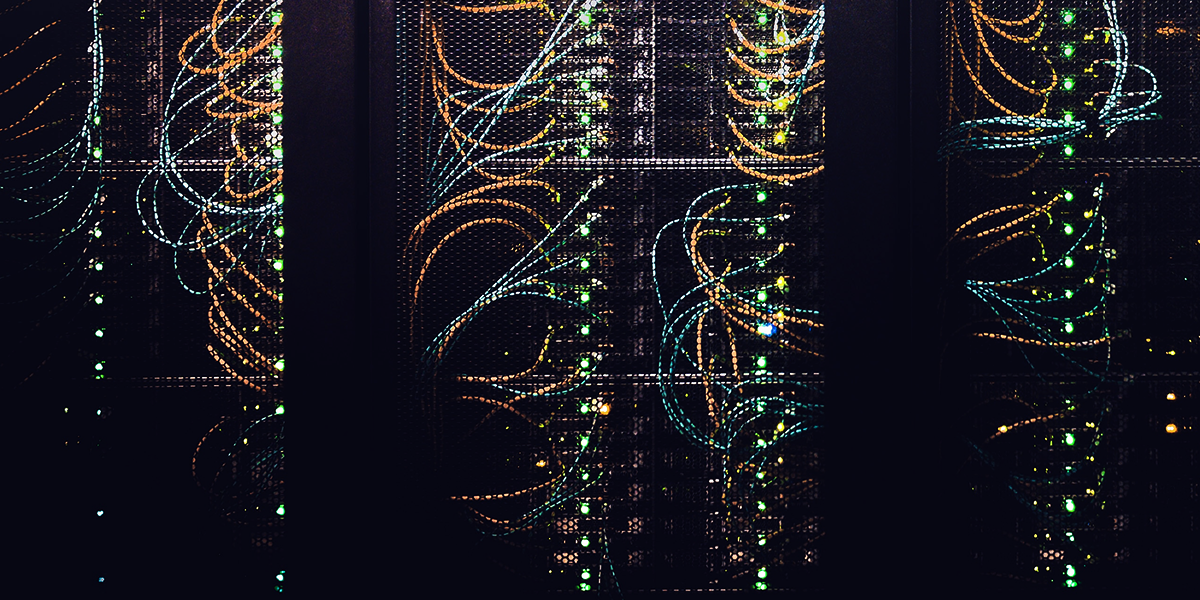Data centres
Data centres are an essential part of the economic system, whose importance will continue to increase due to digitisation. They are particularly dependent on a reliable power supply. Systems for uninterruptible power supply (UPS) offer important protection against disruptions. Batteries play a central role here: they secure the power supply to the data centre in the event of power failures until other backup mechanisms take effect.
References
Relevance of this field of application
Data centres are an important pillar of economic activity. Their importance often extends far beyond the regional level due to the global networking of the economy. Four successive security standards ("tier 1-4") have been established to protect against data loss and functional failures due to irregularities in the power supply. While the Tier 1 standard does not include UPS components, their scope and design increases from Tier 2 to Tier 4.1
1 ScaleUp Technologies (2020a): Tier 1 bis 4: Die vier Tier-Klassen des Rechenzentrums.
Link ↗ (accessed 13.01.2021).
In Europe, the energy consumption of data centres has increased from 56 TWh/a to 87 TWh/a (i.e. by 55 %) between 2010 and 2020. This currently corresponds to around 2.7 % of total European electricity consumption. A further increase to 98 THh/a is expected by 2030.2 In Germany alone, the electricity demand of data centres amounted to 14 TWh in 2018. Worldwide, the energy demand of data centres was an estimated 400 TWh/a in 2018.3 A considerable share of this - estimated at around 12 % - is accounted for by UPS.4
Use of battery storage
The core of a UPS is a power distribution network between the public AC grid and the mission-critical loads of the data centre. The task of the associated battery system is to bridge disturbances in the power supply for at least 15 minutes. After that, other backup mechanisms (e.g. generators) kick in for longer bridging power
2 Hintemann, Ralph; Hinterholzer, Simon (2020): Rechenzentren in Europa – Chancen für eine nachhaltige Digitalisierung. Borderstep Institut.
Link ↗ (accessed 15.01.2021).
3 Hintemann, Ralph (2020): Rechenzentren 2018 - Effizienzgewinne reichen nicht aus: Energiebe darf der Rechenzentren steigt weiter deutlich an. Borderstep Institut.
Link ↗ (accessed 18.01.2021).
4 Fraunhofer IZM & Borderstep Institut (2015): Entwicklung des IKT-bedingten Strombedarfs in Deutschland – Abschlussbericht.
Link ↗ (accessed 15.01.2021).
The higher the security requirements of the tier standard, the more UPS capacities must be kept available. The central advantage of multiple redundant systems is that maintenance and service are possible without limiting the availability of the data centre. The dimensioning of the batteries used results from the energy requirements of the mission-critical loads, the redundancy level and the specific ageing effects of the batteries.5
Another possible use for battery storage arises from the conversion losses of the AC power supply in data centres: converting the power supply to DC by using DC-capable components (servers, UPS, etc.) could reduce energy consumption by at least 10% compared to efficient operation with AC.6
Performance requirements
The safety of the battery storage is of central importance: fire or explosion events not only endanger human lives, but also the function of the data centre - with high potential damages for the operator as well as especially for the dependent commercial enterprises.
The longevity of batteries is a key factor for the investment security of data centre operators. Batteries should therefore have a high cycle stability as well as constant performance values over the long term. This is all the more true the more extensively they are used to improve energy efficiency in data centres.
With a given amount of space, high specific energy, constant performance and deep dischargeability also offer the opportunity to minimise space requirements. Freed-up space can instead be used for the revenue drivers (servers, etc.).
Market outlook
The market for data centres is growing worldwide - driven by digitisation, streaming services, video telephony and social media - along three paths: (1) hyperscale data centres for bundling very large capacities at one location, (2) data centres operated by companies themselves and (3) small data centres for edge computing in the Internet of Things (IoT). The latter provide computing power at the edge of the communication network and thus replace data transmission to central data centres. In autonomous driving, this can shorten latency times and thus increase the reaction speed of the vehicle.
In Europe, data centres account for about 23% of global energy consumption. Germany (25%), the United Kingdom (22%) and France (15%) cover more than 60% of this.6 Investments in data centres are increasing by more than 10% annually in Germany alone; in 2016 they exceeded the billion mark for the first time. Internationally, even far higher growth rates are being recorded. This is also driving battery demand for UPS power and energy efficiency.7
7 Hintemann, Ralph, Beucker, Severin & Hinterholzer, Simon (2018): Energieeffizienz und Rechenzentren in Deutschland: Weltweit führend oder längst abgehängt? Eine NeRZ-Studie zur Entwicklung des Rechenzentrumsmarktes in Deutschland. Kurzfassung.
Link ↗ (accessed 15.01.2021).
